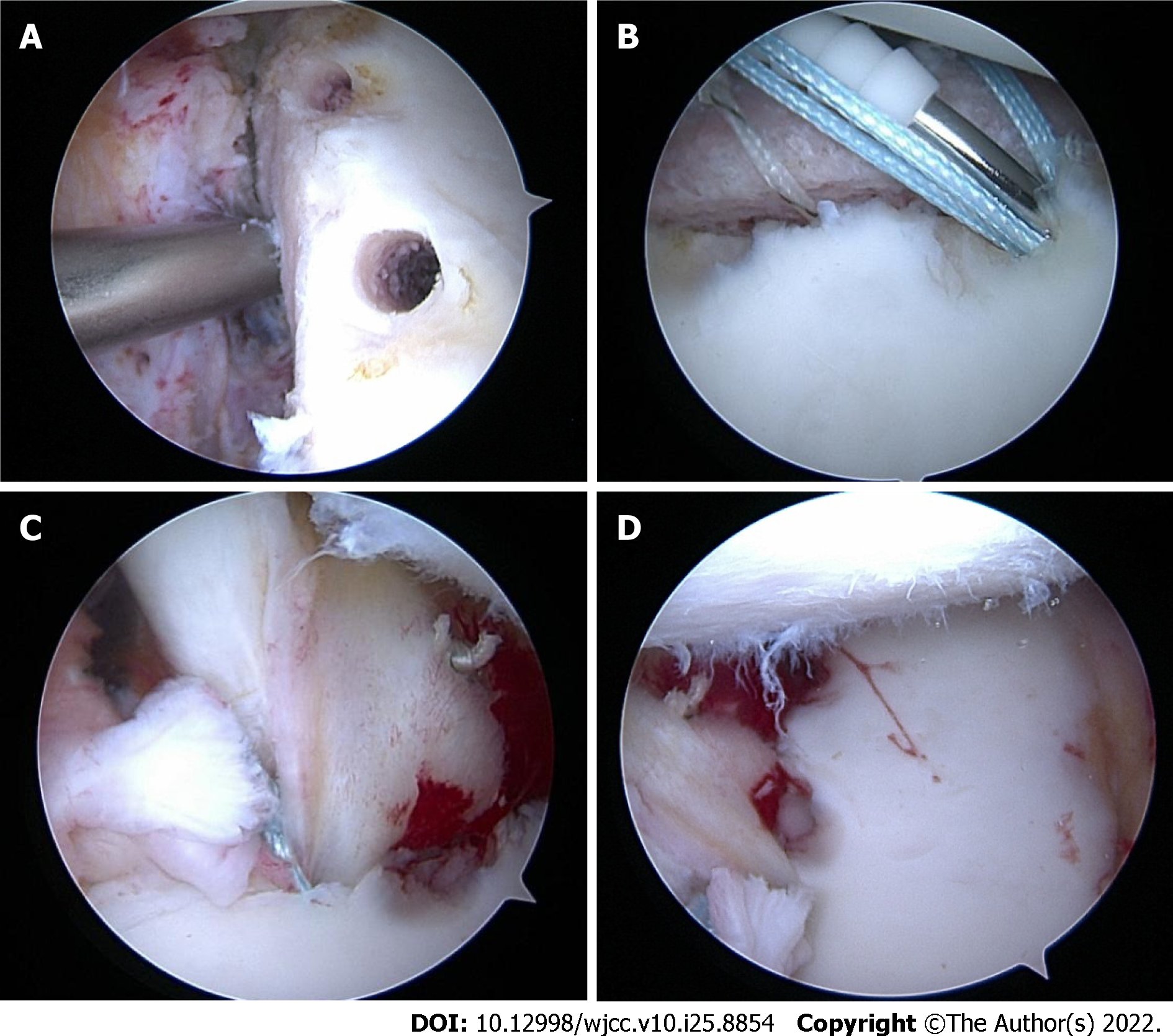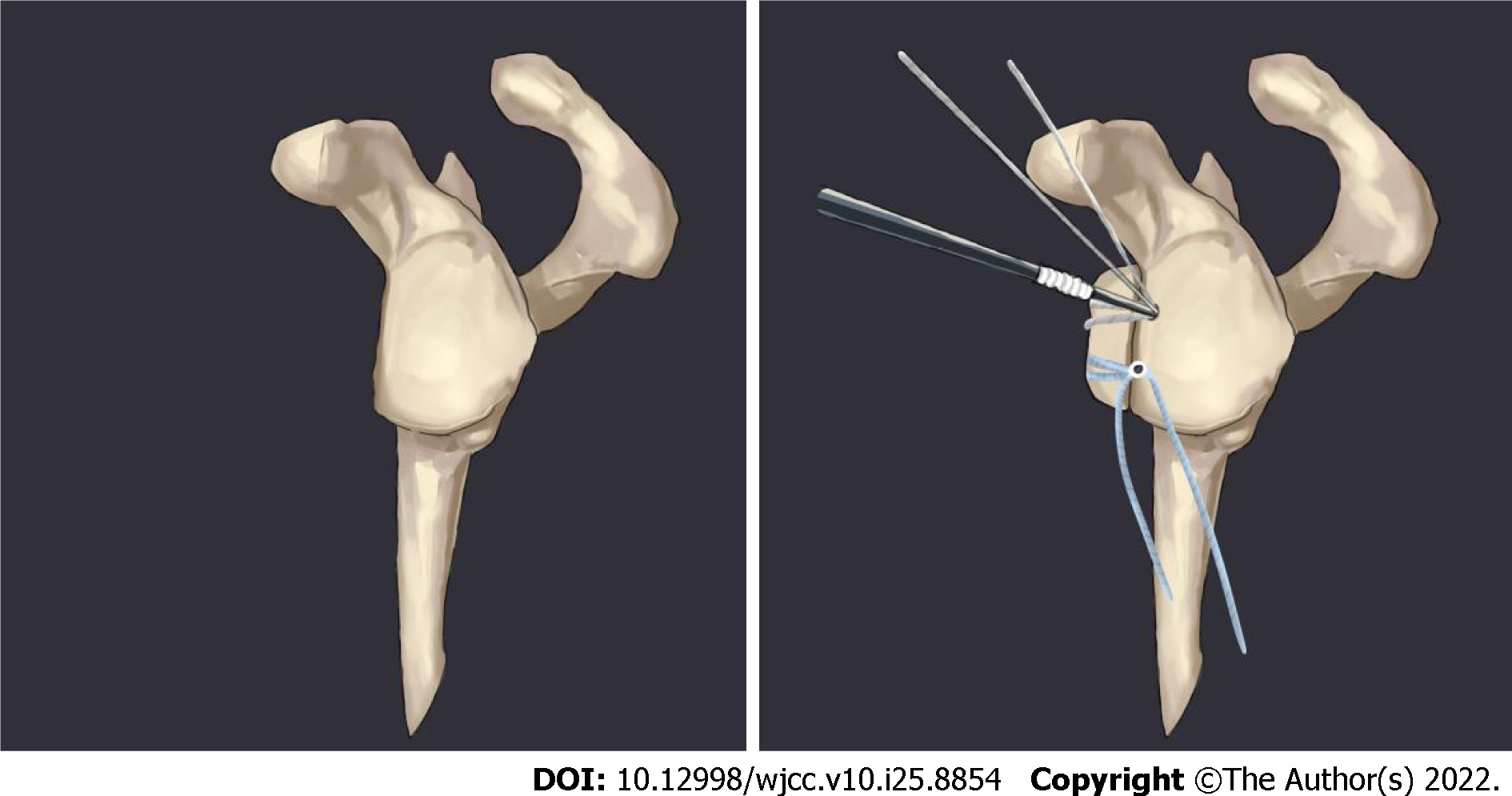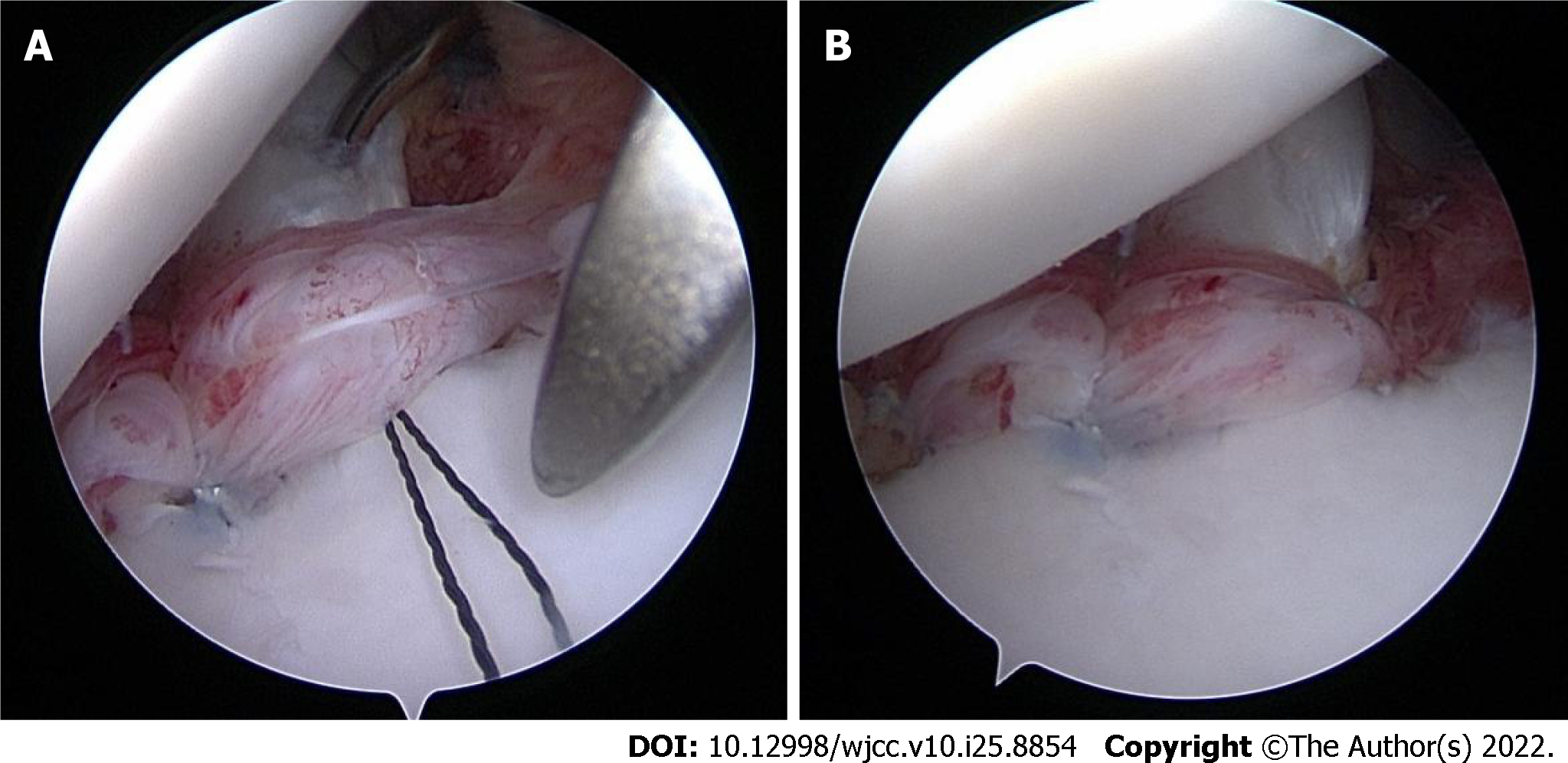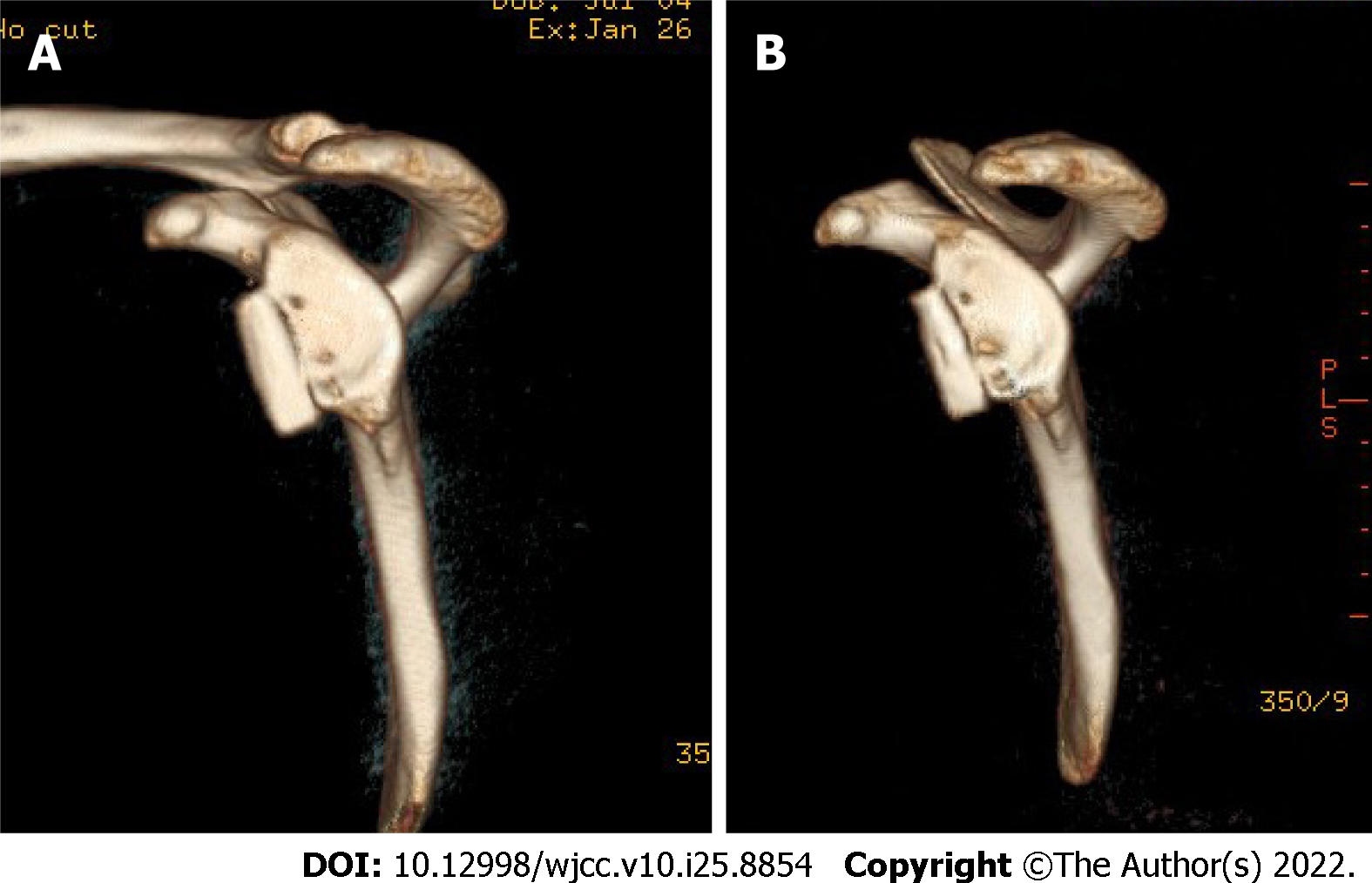Copyright
©The Author(s) 2022.
World J Clin Cases. Sep 6, 2022; 10(25): 8854-8862
Published online Sep 6, 2022. doi: 10.12998/wjcc.v10.i25.8854
Published online Sep 6, 2022. doi: 10.12998/wjcc.v10.i25.8854
Figure 1 Computed tomography scan and three-dimensional reconstruction of the shoulder joint were routinely performed preoperatively, and the bone defect area was measured.
A: Glenoid bone defect was < 20%; B: Glenoid bone defect was > 20%.
Figure 2 Subscapularis upper one-third tenodesis with bone autograft.
A: A 3.0-mm suture anchor was drilled at the 4 o’clock position; B: Iliac crest bone autograft was implanted, and Pushlock anchors were inserted to compress the bone block; C: Upper one-third of the subscapularis tendon was tightened; D: Anterosuperior approach was observed again under arthroscopy. The humeral head was completely re-dislocated.
Figure 3 Surgical diagram: Iliac bone block was fixed with Pushlock anchors.
Figure 4 Subscapularis upper one-third tenodesis.
A: Upper one-third of the subscapular tendon was sutured; B: Suture line was pressed with a Pushlock anchor and the tension was adjusted appropriately.
Figure 5 Measurement of bone graft resorption (showing 1 wk and 1 yr postoperatively; left shoulder view on 3-dimensional computed tomography scan).
A: 1 wk after surgery; B: 1 yr after surgery.
- Citation: An BJ, Wang FL, Wang YT, Zhao Z, Wang MX, Xing GY. Arthroscopy with subscapularis upper one-third tenodesis for treatment of recurrent anterior shoulder instability independent of glenoid bone loss. World J Clin Cases 2022; 10(25): 8854-8862
- URL: https://www.wjgnet.com/2307-8960/full/v10/i25/8854.htm
- DOI: https://dx.doi.org/10.12998/wjcc.v10.i25.8854

















